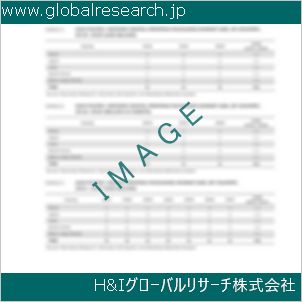Table of Contents
1 Industry Overview of Propionicacid
1.1 Definition and Specifications of Propionicacid
1.1.1 Definition of Propionicacid
1.1.2 Specifications of Propionicacid
1.2 Classification of Propionicacid
1.3 Applications of Propionicacid
1.3.1 Nuclear Application
1.3.2 Non-Nuclear Application
1.4 Industry Chain Structure of Propionicacid
1.5 Industry Overview and Major Regions Status of Propionicacid
1.5.1 Industry Overview of Propionicacid
1.5.2 Global Major Regions Status of Propionicacid
1.6 Industry Policy Analysis of Propionicacid
1.7 Industry News Analysis of Propionicacid
2 Manufacturing Cost Structure Analysis of Propionicacid
2.1 Raw Material Suppliers and Price Analysis of Propionicacid
2.2 Equipment Suppliers and Price Analysis of Propionicacid
2.3 Labor Cost Analysis of Propionicacid
2.4 Other Costs Analysis of Propionicacid
2.5 Manufacturing Cost Structure Analysis of Propionicacid
2.6 Manufacturing Process Analysis of Propionicacid
3 Technical Data and Manufacturing Plants Analysis of Propionicacid
3.1 Capacity and Commercial Production Date of Global Propionicacid Major Manufacturers in 2023
3.2 Manufacturing Plants Distribution of Global Propionicacid Major Manufacturers in 2023
3.3 R&D Status and Technology Source of Global Propionicacid Major Manufacturers in 2023
3.4 Raw Materials Sources Analysis of Global Propionicacid Major Manufacturers in 2023
4 Capacity, Production and Revenue Analysis of Propionicacid by Regions, Types and Manufacturers
4.1 Global Capacity, Production and Revenue of Propionicacid by Regions 2019-2024
4.2 Global and Major Regions Capacity, Production, Revenue and Growth Rate of Propionicacid 2019-2024
4.3 Global Capacity, Production and Revenue of Propionicacid by Types 2019-2024
4.4 Global Capacity, Production and Revenue of Propionicacid by Manufacturers 2019-2024
5 Price, Cost, Gross and Gross Margin Analysis of Propionicacid by Regions, Types and Manufacturers
5.1 Price, Cost, Gross and Gross Margin Analysis of Propionicacid by Regions 2019-2024
5.2 Price, Cost, Gross and Gross Margin Analysis of Propionicacid by Types 2019-2024
5.3 Price, Cost, Gross and Gross Margin Analysis of Propionicacid by Manufacturers 2019-2024
6 Consumption Volume, Consumption Value and Sale Price Analysis of Propionicacid by Regions, Types and Applications
6.1 Global Consumption Volume and Consumption Value of Propionicacid by Regions 2019-2024
6.2 Global and Major Regions Consumption Volume, Consumption Value and Growth Rate of Propionicacid 2019-2024
6.3 Global Consumption Volume and Consumption Value of Propionicacid by Types 2019-2024
6.4 Global Consumption Volume and Consumption Value of Propionicacid by Applications 2019-2024
6.5 Sale Price of Propionicacid by Regions 2019-2024
6.6 Sale Price of Propionicacid by Types 2019-2024
6.7 Sale Price of Propionicacid by Applications 2019-2024
6.8 Market Share Analysis of Propionicacid by Different Sale Price Levels
7 Supply, Import, Export and Consumption Analysis of Propionicacid
7.1 Supply, Consumption and Gap of Propionicacid 2019-2024
7.2 Global Capacity, Production, Price, Cost, Revenue, Supply, Import, Export and Consumption of Propionicacid 2019-2024
7.3 USA Capacity, Production, Price, Cost, Revenue, Supply, Import, Export and Consumption of Propionicacid 2019-2024
7.4 EU Capacity, Production, Price, Cost, Revenue, Supply, Import, Export and Consumption of Propionicacid 2019-2024
7.5 China Capacity, Production, Price, Cost, Revenue, Supply, Import, Export and Consumption of Propionicacid 2019-2024
7.6 Japan Capacity, Production, Price, Cost, Revenue, Supply, Import, Export and Consumption of Propionicacid 2019-2024
8 Major Manufacturers Analysis of Propionicacid
8.1 Manufacturer One
8.1.1 Company Profile
8.1.2 Product Picture and Specifications
8.1.2.1 Type I
8.1.2.2 Type II
8.1.2.3 Type III
8.1.3 Capacity, Production, Price, Cost, Gross and Revenue
8.1.4 Contact Information
8.2 Manufacturer Two
8.2.1 Company Profile
8.2.2 Product Picture and Specifications
8.2.2.1 Type I
8.2.2.2 Type II
8.2.2.3 Type III
8.2.3 Capacity, Production, Price, Cost, Gross and Revenue
8.2.4 Contact Information
8.3 Manufacturer Three
8.3.1 Company Profile
8.3.2 Product Picture and Specifications
8.3.2.1 Type I
8.3.2.2 Type II
8.3.2.3 Type III
8.3.3 Capacity, Production, Price, Cost, Gross and Revenue
8.3.4 Contact Information
8.4 Manufacturer Four
8.4.1 Company Profile
8.4.2 Product Picture and Specifications
8.4.2.1 Type I
8.4.2.2 Type II
8.4.2.3 Type III
8.4.3 Capacity, Production, Price, Cost, Gross and Revenue
8.4.4 Contact Information
8.5 Manufacturer Five
8.5.1 Company Profile
8.5.2 Product Picture and Specifications
8.5.2.1 Type I
8.5.2.2 Type II
8.5.2.3 Type III
8.5.3 Capacity, Production, Price, Cost, Gross and Revenue
8.5.4 Contact Information
…
9 Marketing Trader or Distributor Analysis of Propionicacid
9.1 Marketing Channels Status of Propionicacid
9.2 Traders or Distributors with Contact Information of Propionicacid by Regions
9.3 Ex-work Price, Channel Price and End Buyer Price Analysis of Propionicacid
9.4 Regional Import, Export and Trade Analysis of Propionicacid
10 Industry Chain Analysis of Propionicacid
10.1 Upstream Major Raw Materials Suppliers Analysis of Propionicacid
10.1.1 Major Raw Materials Suppliers with Contact Information Analysis of Propionicacid
10.1.2 Major Raw Materials Suppliers with Supply Volume Analysis of Propionicacid by Regions
10.2 Upstream Major Equipment Suppliers Analysis of Propionicacid
10.2.1 Major Equipment Suppliers with Contact Information Analysis of Propionicacid
10.2.2 Major Equipment Suppliers with Product Pictures Analysis of Propionicacid by Regions
10.3 Downstream Major Consumers Analysis of Propionicacid
10.3.1 Major Consumers with Contact Information Analysis of Propionicacid
10.3.2 Major Consumers with Consumption Volume Analysis of Propionicacid by Regions
10.4 Supply Chain Relationship Analysis of Propionicacid
11 Development Trend of Analysis of Propionicacid
11.1 Capacity, Production and Revenue Forecast of Propionicacid by Regions and Types
11.1.1 Global Capacity, Production and Revenue of Propionicacid by Regions 2024-2029
11.1.2 Global and Major Regions Capacity, Production, Revenue and Growth Rate of Propionicacid 2024-2029
11.1.3 Global Capacity, Production and Revenue of Propionicacid by Types 2024-2029
11.2 Consumption Volume and Consumption Value Forecast of Propionicacid by Regions, Types and Applications
11.2.1 Global Consumption Volume and Consumption Value of Propionicacid by Regions 2024-2029
11.2.2 Global and Major Regions Consumption Volume, Consumption Value and Growth Rate of Propionicacid 2024-2029
11.2.3 Global Consumption Volume and Consumption Value of Propionicacid by Types 2024-2029
11.2.4 Global Consumption Volume and Consumption Value of Propionicacid by Applications 2024-2029
11.3 Supply, Import, Export and Consumption Forecast of Propionicacid
11.3.1 Supply, Consumption and Gap of Propionicacid 2024-2029
11.3.2 Global Capacity, Production, Price, Cost, Revenue, Supply, Import, Export and Consumption of Propionicacid 2024-2029
11.3.3 USA Capacity, Production, Price, Cost, Revenue, Supply, Import, Export and Consumption of Propionicacid 2024-2029
11.3.4 EU Capacity, Production, Price, Cost, Revenue, Supply, Import, Export and Consumption of Propionicacid 2024-2029
11.3.5 China Capacity, Production, Price, Cost, Revenue, Supply, Import, Export and Consumption of Propionicacid 2024-2029
11.3.6 Japan Capacity, Production, Price, Cost, Revenue, Supply, Import, Export and Consumption of Propionicacid 2024-2029
12 New Project Investment Feasibility Analysis of Propionicacid
12.1 New Project SWOT Analysis of Propionicacid
12.2 New Project Investment Feasibility Analysis of Propionicacid
13 Conclusion of the Global Propionicacid (CAS 79-09-4) Industry 2024 Market Research Report
| ※参考情報 プロピオン酸は、化学式C3H6O2を持つ有機化合物で、CAS番号は79-09-4です。プロピオン酸はカルボン酸の一種で、特に短鎖脂肪酸に分類されます。自然界では、発酵過程で生成されることがあり、乳酸菌や酢酸菌などが関与しています。この物質は特有の香りを持ち、低濃度であればさわやかな酸味を感じさせ、食品添加物としても利用されています。 プロピオン酸の特徴としては、その化学的性質が挙げられます。水に良く溶ける性質を持ち、加熱すると揮発性が高いため、一部の工業プロセスにおいても重宝されます。また、プロピオン酸は他の化合物と反応しやすく、エステル化反応や脱水縮合反応において重要な中間体として機能します。このため、生化学や有機合成の分野でも広く利用されています。 プロピオン酸にはいくつかの種類があり、主にそのエステル誘導体が利用されます。プロピオン酸エステルは、フレグランスや香料、溶剤として使用されることがあります。また、プロピオン酸誘導体は医薬品の合成や研究においても重要な役割を果たしています。特に、プロピオン酸はその酸性度から脱酸素化反応や還元クリアランス反応でリダクション剤としての機能も持っています。 用途について考えると、プロピオン酸は食品分野において非常に重要な役割を果たします。例えば、食品添加物として保存料や酸味料として使用され、微生物の発育を抑制する効果が期待されているため、肉製品やパンなどに利用されます。また、プロピオン酸は動物飼料の添加物としても用いられ、特に家畜の腸内環境を改善する助けになります。 また、プロピオン酸は工業分野でも多様な用途があり、ペイント、コーティング、接着剤などの製造に使われます。プロピオン酸を基にしたポリマーや樹脂の合成も行われており、それにより強度と柔軟性を増すことができるため、さまざまな工業製品への応用が期待されています。 プロピオン酸に関連する技術としては、合成技術や抽出技術が挙げられます。プロピオン酸の合成は主に二酸化炭素とエチレンを反応させる方法や、発酵による生産方法があります。特にバイオテクノロジーを用いた発酵プロセスは、持続可能な資源の観点から注目されています。発酵においては、特定の微生物を使用して、原料から効率的にプロピオン酸を生成する技術が発展しています。 さらに、プロピオン酸を利用した新しい応用としては、医薬品の合成における重要な中間体としての利用や、環境に優しい殺菌剤の開発が進められています。環境問題が深刻化する中で、持続可能な開発を目指す技術の中で、プロピオン酸は改めて注目されています。 このように、プロピオン酸は単なる化合物に留まらず、さまざまな分野で広範囲にわたって応用される重要な物質であることが理解できます。食品加工、農業、工業、医薬品など、多岐にわたる用途は、プロピオン酸の化学的性質とその反応性に基づいているため、今後も新しい用途が発見される可能性が高いといえます。特に持続可能な方法での生産が進むことで、より環境に配慮した利用が期待されています。これからの研究や技術革新により、プロピオン酸はますますその重要性を増していくことでしょう。 |
❖ 免責事項 ❖
http://www.globalresearch.jp/disclaimer

-gr.jpg)










